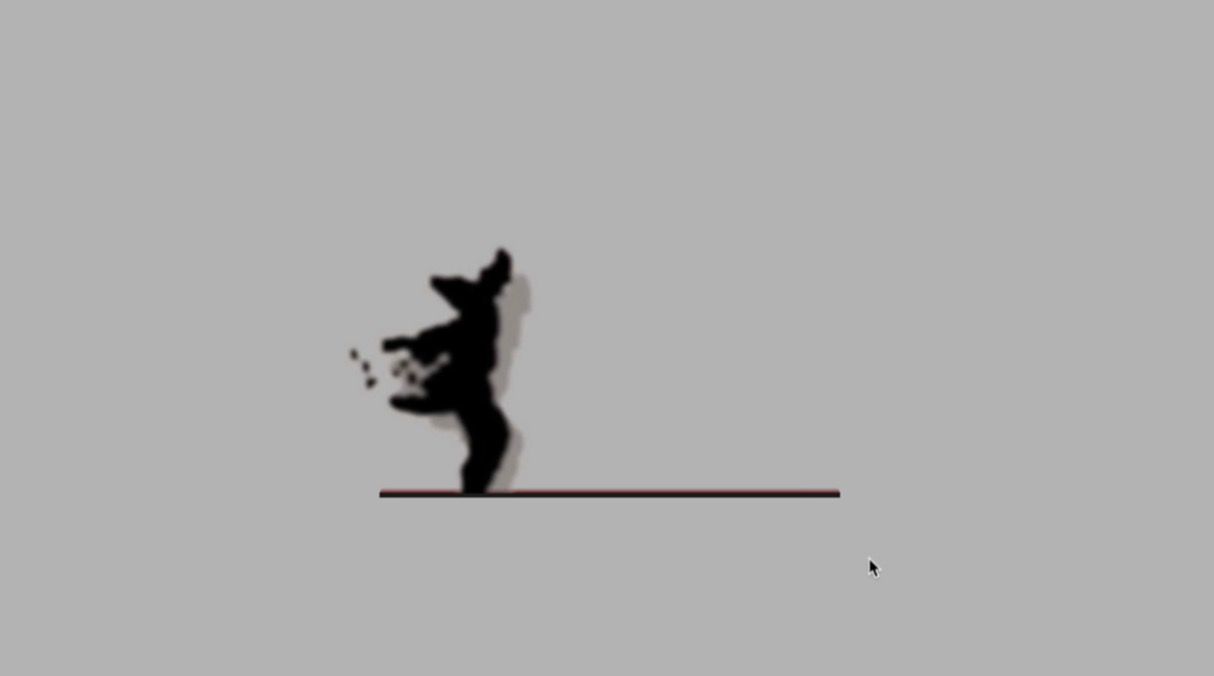This is a video archive of the Flash animation. The original web materials are presented below.
The Timed Body was originally developed for ‘The Body and Performance’ working group at TaPRA 2007 in Birmingham. It was then adapted and redeveloped as a Flash-based interactive for Extensions Journal and published in June 2008.
Performance: Paea Leach
Flash coding: Simon Ellis
Summary
In The Timed Body I sidestep the spatialised (mapped) body in which humans act as containers for memory, and instead offer a consideration and performed articulation of a temporality of remembering. Although memory is conventionally linked with time, for Henri Bergson, time “is the spatialized, measurable counterpart of space, the other of space” (Grosz, 2004 p.279) that is already marked by the penetration of space. In Bergson’s efforts to distil or untangle time and space he proposes ‘the data of consciousness’ as being temporal, in other words duration. Duration incorporates, by definition, newness and creativity and it is where/when “our memories are forged” (Cariou, 1999 p.102).
The central component of The Timed Body is a curated sampling of the performance, web and video project, Four Act of Violence Leading Up to Now (Ellis, Corbet, & Leach, 2006). The project, which premièred at Dancehouse in Melbourne in September 2006, considers personal and glancing perspectives on the microtraumatic impacts of time.
This account of Four Acts in The Timed Body involves presenting animated, aural and videographic components of the project, whilst talking to conceptual concerns for Bergson’s dureè. The dialogue between the audiovisual and the conceptual is in turn framed by a virtual conversation between the performer, Paea Leach, and me in which she articulates her experiences of memory in the development and embodiment of Four Acts.
In generating and presenting this account my goals were threefold: (i) to extend the mnemonic resonances of Four Acts beyond its web and performative modalities; (ii) to explore Bergson’s contribution to thinking about time in relation to newness in memory; (iii) to allow the performative hand/writing, words and moving images of performer Paea Leach to temporally mark the account.
Through Leach’s consideration of her embodiment of Four Acts (itself a repository for her actual and fictional experiences), we become witnesses to the pleasure and spark of the tacit: a poetics of dureè in which memory ceases to be consumed via a “rearrangement of the pre-existing” (Mullarkey, 1999 p.9) or a clinging to nostalgia, and instead assures novelty.
– September
References
Cariou, M. (1999). Bergson: The Keyboards of Forgetting. In J. Mullarkey (Ed.), The New Bergson (pp. 99-117). Manchester: Manchester University Press.
Ellis, S., Corbet, D., & Leach, P. (Artist). (2006). Four Acts of Violence Leading Up to Now [Dance and video performance].
Grosz, E. (2004). The Nick of Time: Politics, Evolution and the Untimely. Crows Nest, NSW: Allen & Unwin.
